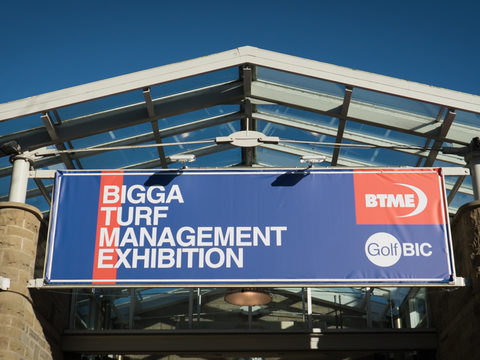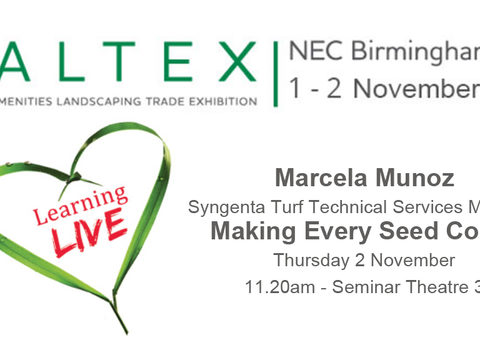GreenCast in UK and Ireland - TSL OPENS THE WORLD OF TURF R&D
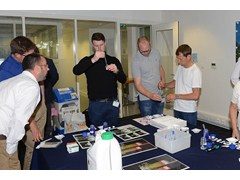
Over 80 greenkeepers and groundsmen from across the country had the exciting chance to experience the inner workings of the UK's largest and most sophisticated specialist crop and turf R&D facility, during the latest Turf Science Live event.
Organised by Syngenta and Everris, the event was held at Syngenta's Jealott's Hill International Research Station in Berkshire. With over 800 scientists on site, it is a key part of the company's £1.4bn annual investment in global R&D.
During the event both Syngenta and Everris research specialists and technical advisors demonstrated how science is giving a better understanding of the issues faced by turf managers, and how it can provide practical solutions that work more effectively and reliably. A series of hands-on experiments gave an insight into how products work and where they will deliver the best possible results.
Dan Lightfoot of Syngenta had greenkeepers working with hydrophobic sand samples to investigate for themselves how the properties of Qualibra wetting agent can help assure the deep and even retention of soil moisture in the root zone.
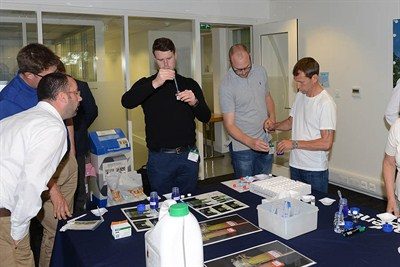
"The unique combination of penetrant and polymer characteristics was designed by Jealott's Hill formulation scientists from over 30,000 potential chemicals they use," reported Dan. "It was their knowledge and experience that enabled the development of a product that could move water down from the surface to keep greens firm and playable, but then retain moisture at depth to promote rooting and enhance the uptake and efficient use of water and nutrients."
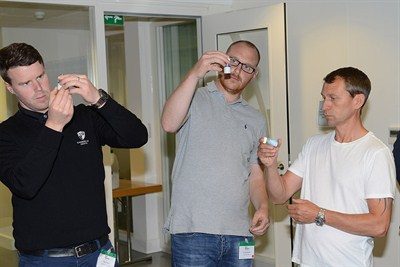
The theme of understanding a product's properties and utilising its strengths to enhance turf health was continued by Everris' International Technical Manager, Dr Andy Owen. He presented research focused on the innovative water soluble seaweed product SeaMax. A key message of his presentation was that seaweed products are all very different, and we cannot expect them all to provide the same benefits to turf in practice.
"Although seaweed products are natural it is important to understand that, biochemically, they are extremely complicated, with multi-component modes of action in the plant and in the soil," he advised. "The seaweed species, the harvesting process and how it is extracted will all impact upon its biochemical profile and so its performance in turf."
Everris have an ongoing programme of research in place to demonstrate the benefits of SeaMax to turf and to justify any marketing claims. As one example, Andy demonstrated Seamax could give a significant five to 10% improvement in seedling rooting. "An in-depth understanding of a product is absolutely essential to make the most informed decisions on where it can be most effectively used," he added.
Turf target for sprays
Biokinetics specialist, Dave Bartlett of Syngenta, pinpointed the vital role of product formulation to ensure sprays can hit the target and deliver the required result. With turf grass leaves often being very short, difficult to spray and then the growing tips cut off, sometimes daily, it can be the most challenging issue to design the perfect product and application technique.
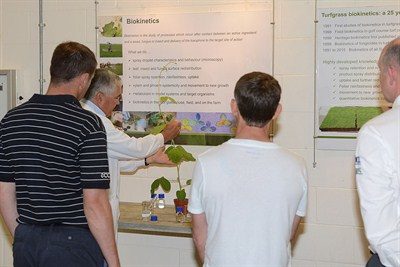
"With the right blend of surfactants, adjuvants and other components, we can aim to ensure products are delivered and stay on the appropriate parts of the turf plant, whether that be on the surface for a contact fungicide, or into the leaf with a systemic.
Dave and his colleagues demonstrated rainfast trial techniques using an rain tower simulator and UV die markers to demonstrate the far superior rainfastness and active retention on the leaf of Medallion TL, compared to iprodione sprays, for example.
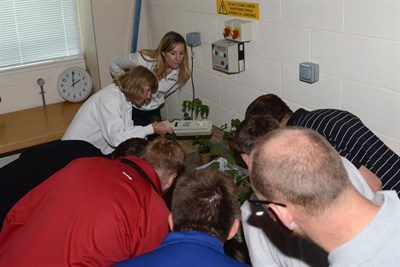
He added the team is fortunate to have a £2.5m formulation robot on the Jealott's Hill site, capable of testing and evaluating thousands of formulation combinations in just a few hours. "With the creation of every turf specific product formulation we are very conscious of the vital importance of turf safety and need to maintain leaf quality," he pointed out.
New insight to disease
The visiting greenkeepers also had the opportunity to spend time in the fascinating world of microscopy - opening a new insight into turf and disease pathogens. The hands-on session included high-powered conventional light microscopes, investigating live disease development on turf and capturing images of rust spores germinating and penetrating into the leaf.
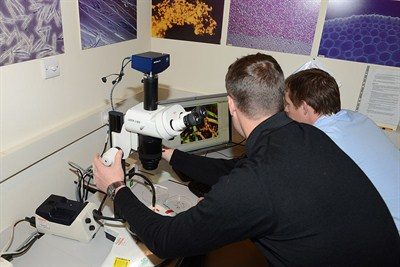
But taking that to a whole new level, there was the chance to operate an electron microscope for themselves - with the capability for 1,000,000x magnification, which its operator, Jill Foundling, highlighted was the same distance that your fingernails grow per second! This mind-boggling potential saw a new look into the centre of spores as they grow and develop.
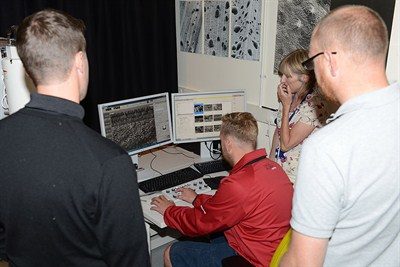
Matthew Nutter, Course Manager at East Berkshire Golf Club, highlighted the microscopy station as among the most interesting and enlightening insights into turf science. The imagery also helped to reinforce the understanding of the need to target disease active on and inside the leaf in the early hours of infection, before it had the chance to cause damage to the playing surface.
Greenkeepers had the chance to take their own images of turf disease, with Camberley Heath Course Manager, Nick Paris, winning the prize of a digital microscope, with his image of rust spores taken using the electron microscope. All the images are available to view on the Greencast website.
Science-based information
Henry Bechelet, Everris UK Technical Manager, investigated the availability of some new tools to monitor turf health and surface quality. He is pioneering use of the technology to evaluate results the company's extensive trials programme of novel new fertilisers and iTurf performance programmes, as well as the potential to help manage turf more precisely in the future.
The new technology, integrating NDVI monitors to measure real time turf health during every pass with the mower, for example, provides very rapid feedback of results. "The data is incredibly powerful when looking at the detail of fertiliser release patterns," he advised. "We are using this technology to help us produce fertilisers that lead the way in the turf market. As always, we are seeking to provide the most accurate science-based information on product performance, and advocate the tools that help turf managers set ever higher standards."
Simon Elsworth, Syngenta Head of Turf & Landscape for Europe (below), highlighted the scale of investment at Jealott's Hill was integral to offering new solutions for greenkeepers and turf managers, to cope with changing issues they face now and in the future.
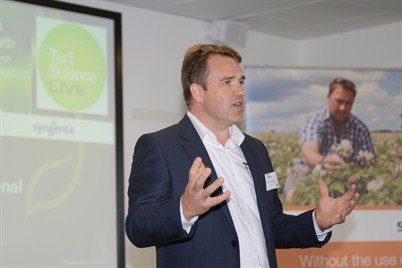
"Syngenta and Everris is committed to this investment and to the turf industry," he said. "Through the development of new products, and the skills of greenkeepers to put them to best use, turf quality is better now than at any time in the past.
"New options for the future will ensure we can continue to provide players with the consistent high quality playing surfaces they demand and that, as an industry, we can Unlock Golf's True Potential."

